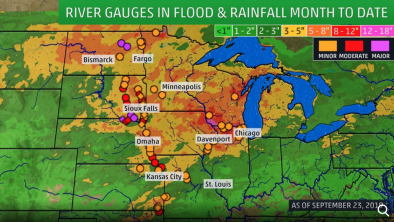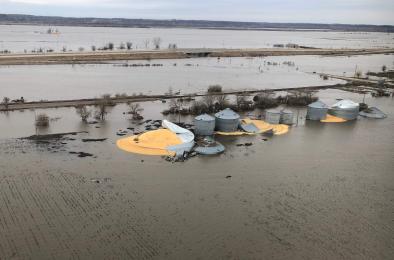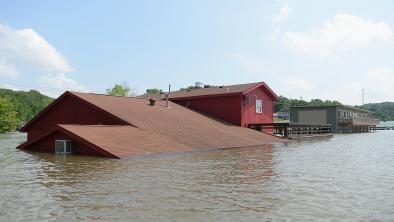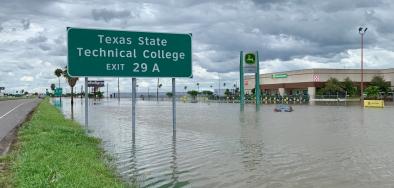Perfect storm of extreme weather and climate change drove deadly Midwest flooding
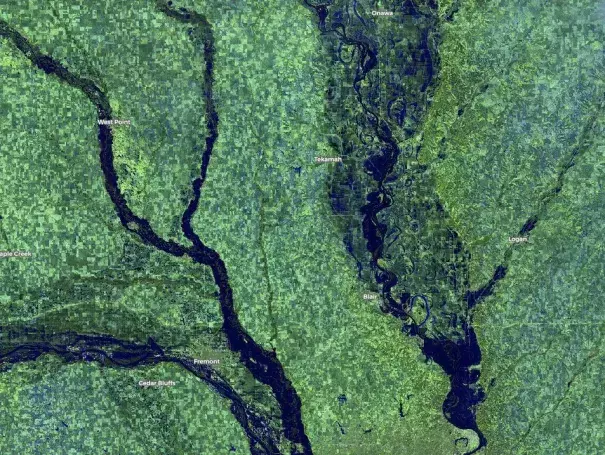
Record-breaking, historic, even Biblical — that's how many are describing the scale of flooding in the Midwest, where thousands of people in Iowa and Nebraska have been forced to flee their homes. In a region that's no stranger to rising floodwaters, a perfect storm of melting snow, "bomb cyclone" rain and climate change conspired to push these floods over the top.
...
The 2018-2019 winter has been defined by a fairly consistent, stubborn pattern featuring two distinct weather regimes. In the West, a roaring Pacific jet stream brought relentless storms and colder-than-normal temperatures. In the East, the opposite weather dominated, with mild and relatively quiet conditions. Separating the two regimes was a persistent storm track propelling storm after storm over the Midwest.
This persistent weather pattern, boosted by a weak El Niño, combined for the wettest winter on record across the U.S. In Minneapolis, snowfall measured 20 inches above normal, while Omaha registered its snowiest season on record. As a result, the ground was saturated and frozen — making the region a sitting duck for last week's bomb cyclone.
The bomb cyclone was itself a historic event, with wind gusts close to 100 mph and record-setting low pressure. It dropped blinding snowfall on its western side in Colorado, and heavy rains in the eastern Plains and Midwest. But those impacts paled in comparison to the flooding it triggered.
With a dense layer of snow blanketing areas from Nebraska and Missouri to Wisconsin, the heavy rains couldn't seep into the frozen ground. Along with melting snow, the rain instead became runoff that caused rivers to swell. Further complicating matters, thick ice jams clogged the flow of the water, causing it to spill over onto adjacent land.
While this confluence of events can and does happen in a normal climate, a warmed climate makes it all the more likely. That's because there is more energy and moisture available.
Last week's bomb cyclone had a low-pressure equivalent to that of a Category 2 hurricane. That kind of low pressure is occasionally seen in nor'easters, but rarely if ever in storms in the lower Plain states. This follows what is expected as the climate changes — spiked storms, with more extremes.
A warmer climate has led to heavier rainfall. Since the early 1900s, annual precipitation has ticked up by 15 to 20 percent in the Upper Midwest. But the more important number is the increase in rainfall from the most extreme weather events, which have dropped nearly 40 percent more rain since 1958.
While an increase in rain can be absorbed by the ground if that rainfall is spread out over the course of the year, additional rain on top of already heavy events magnifies flooding.
In the case of extreme rain, the connection to climate change is simple: Warmer ocean waters evaporate more moisture into the air. A warmer atmosphere holds more moisture. That extra moisture falls as heavier rain. This effect was vividly on display in hurricanes like Harvey and Florence, when rain totals shattered all-time records.
Research shows the Midwest is feeling a disproportionate impact from heavier flooding. Going forward, global climate models continue to project areas like the Midwest, Great Lakes and Northeast will see the greatest increases in yearly precipitation in the U.S.
Related Content
